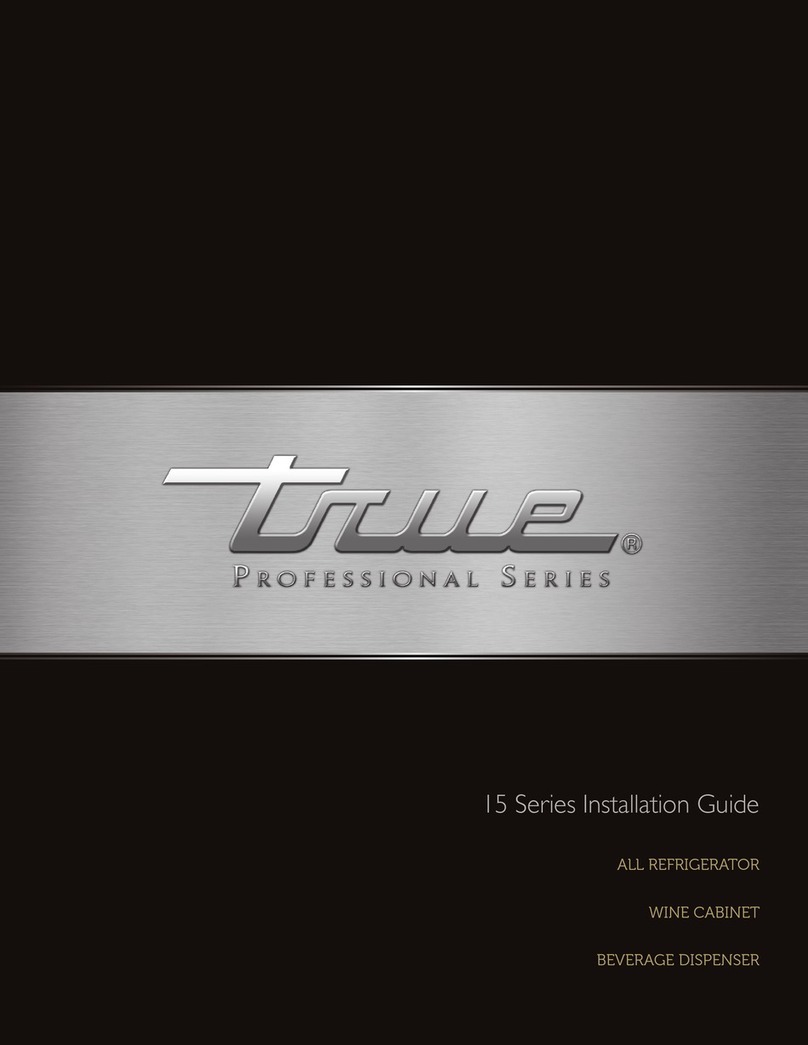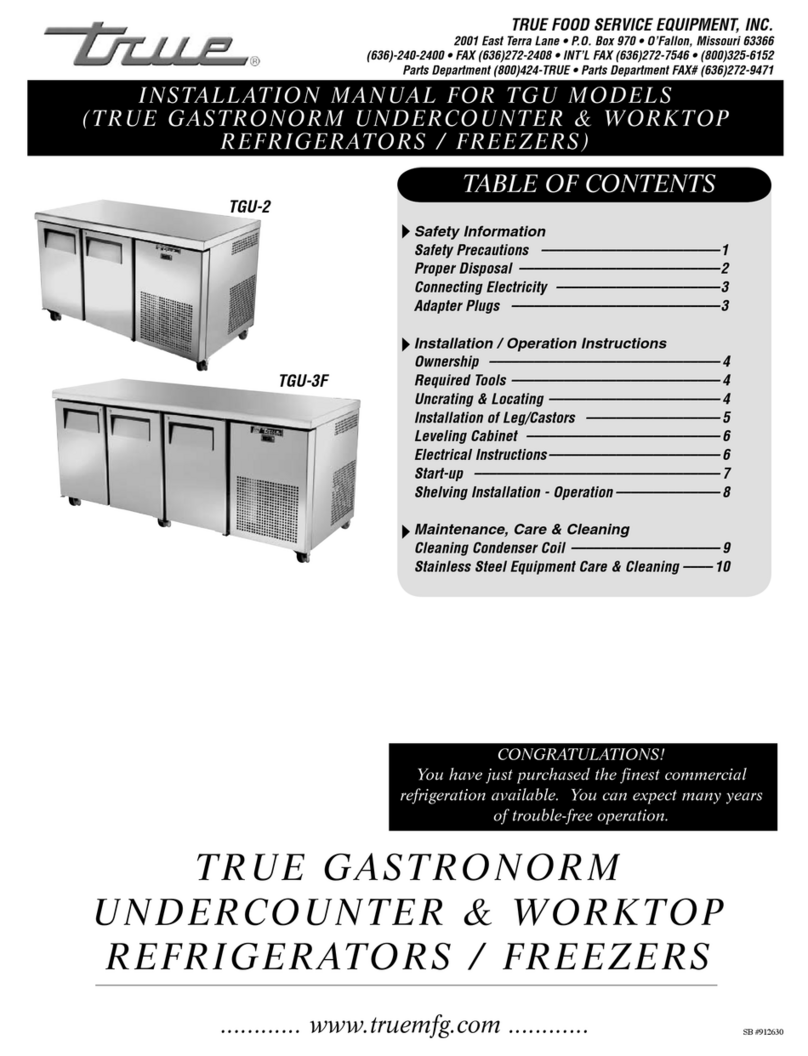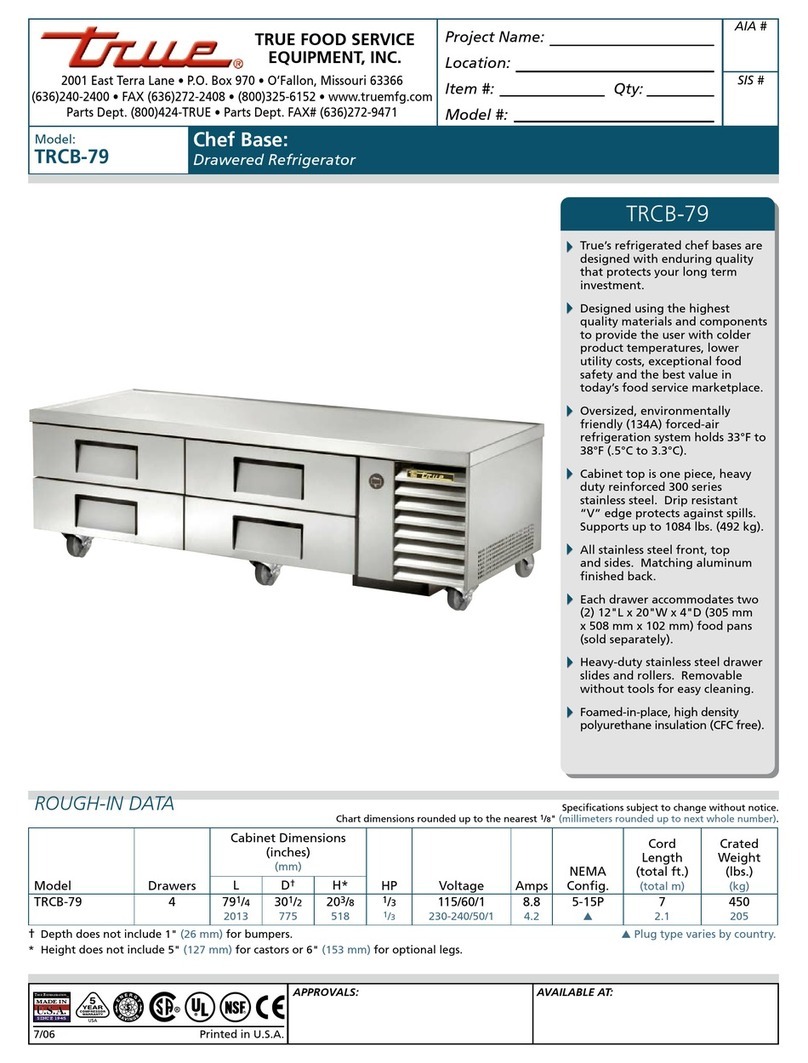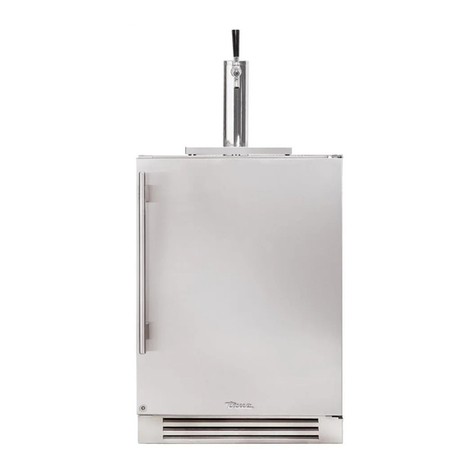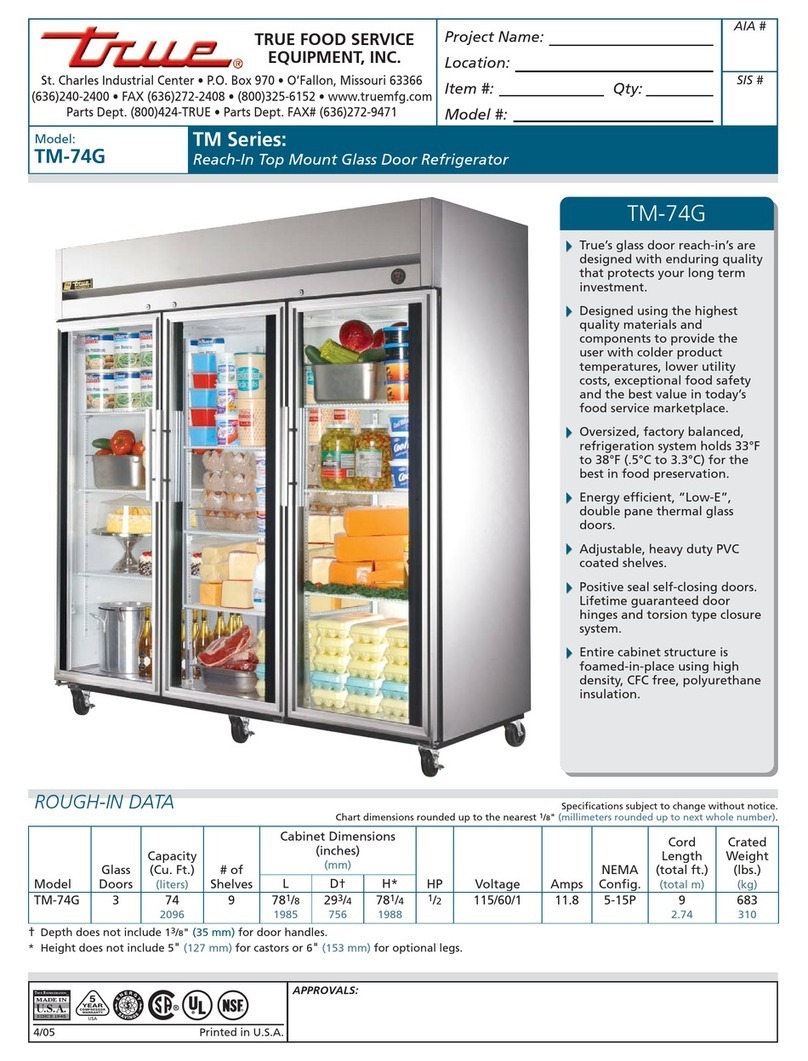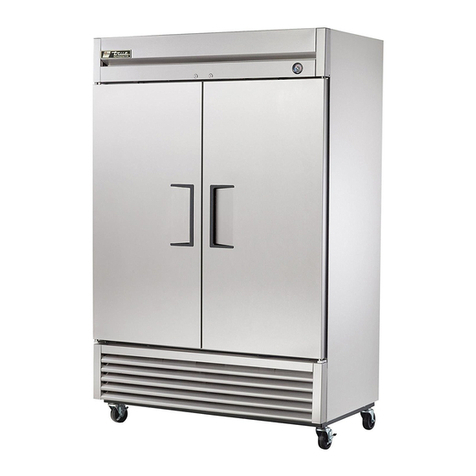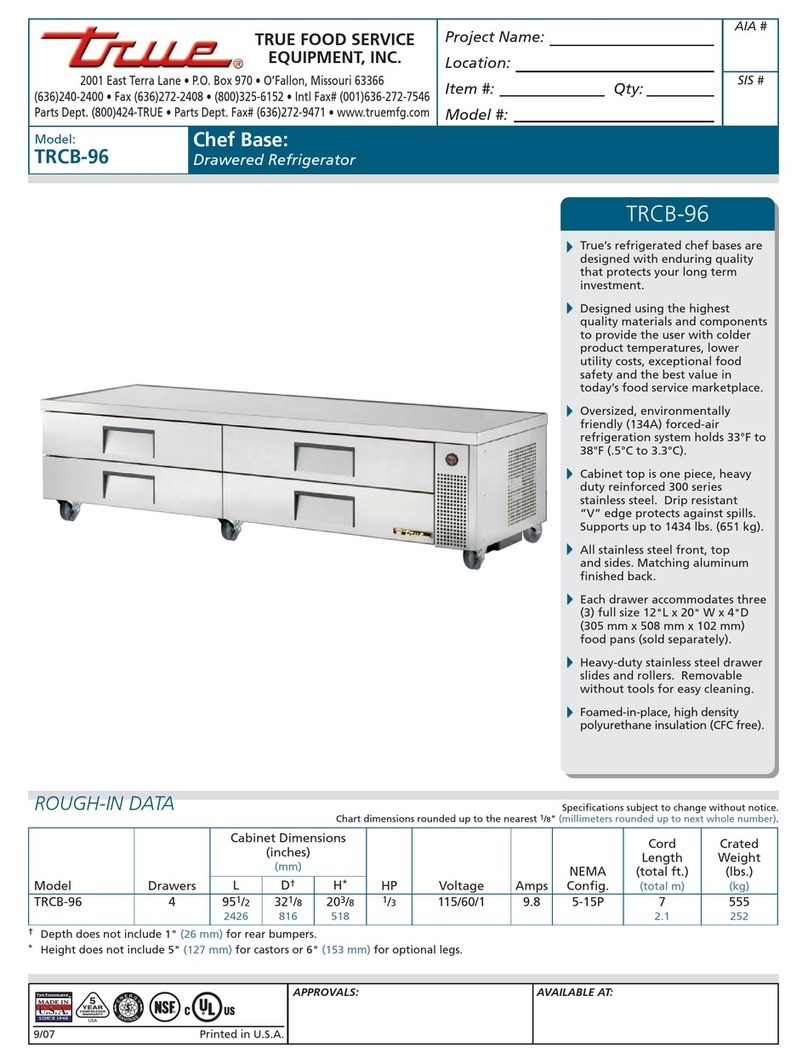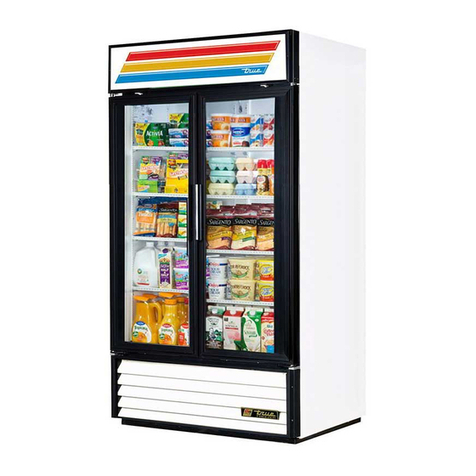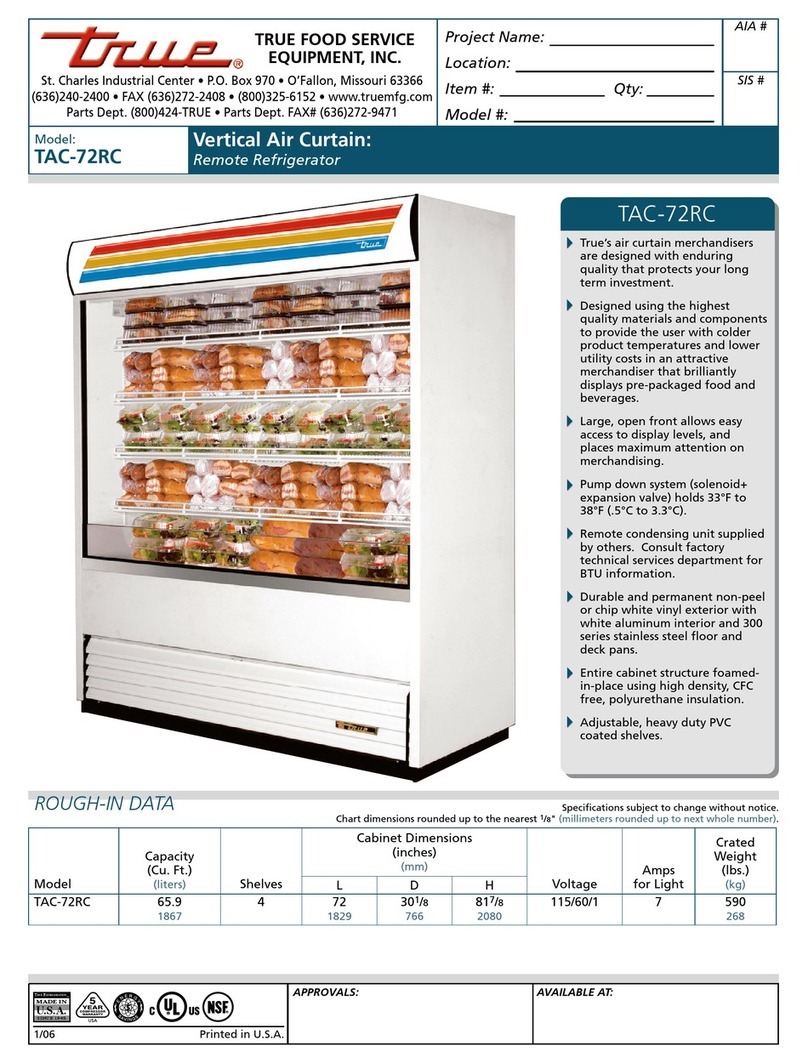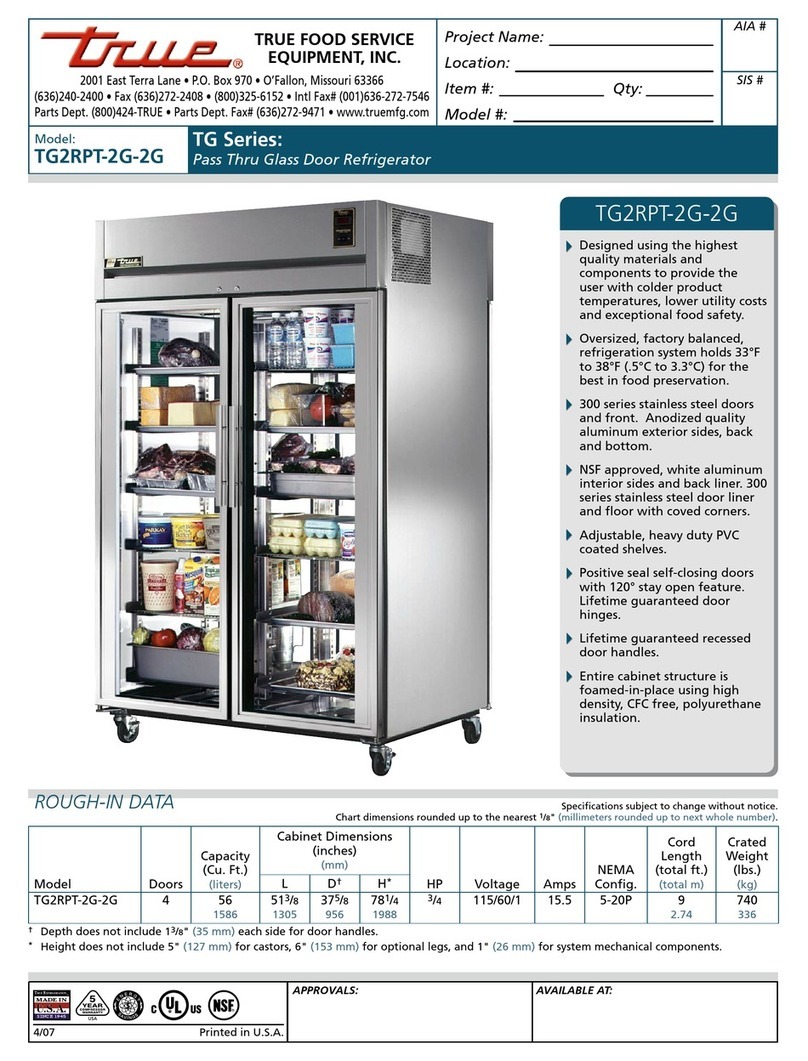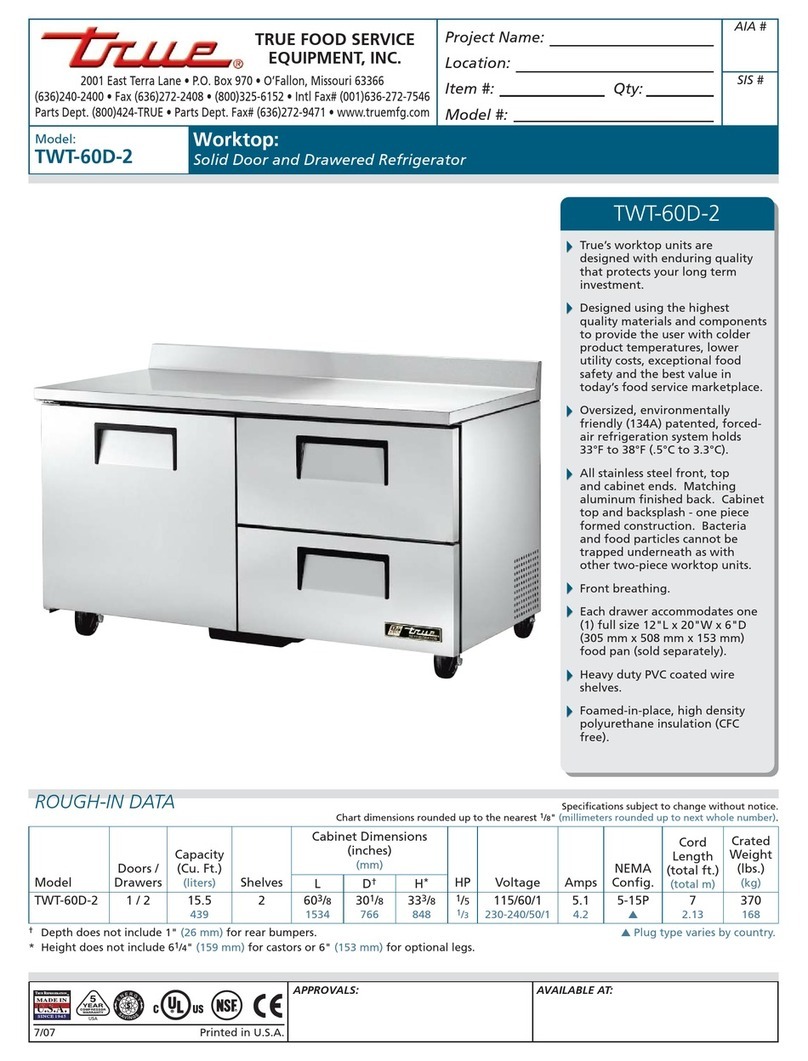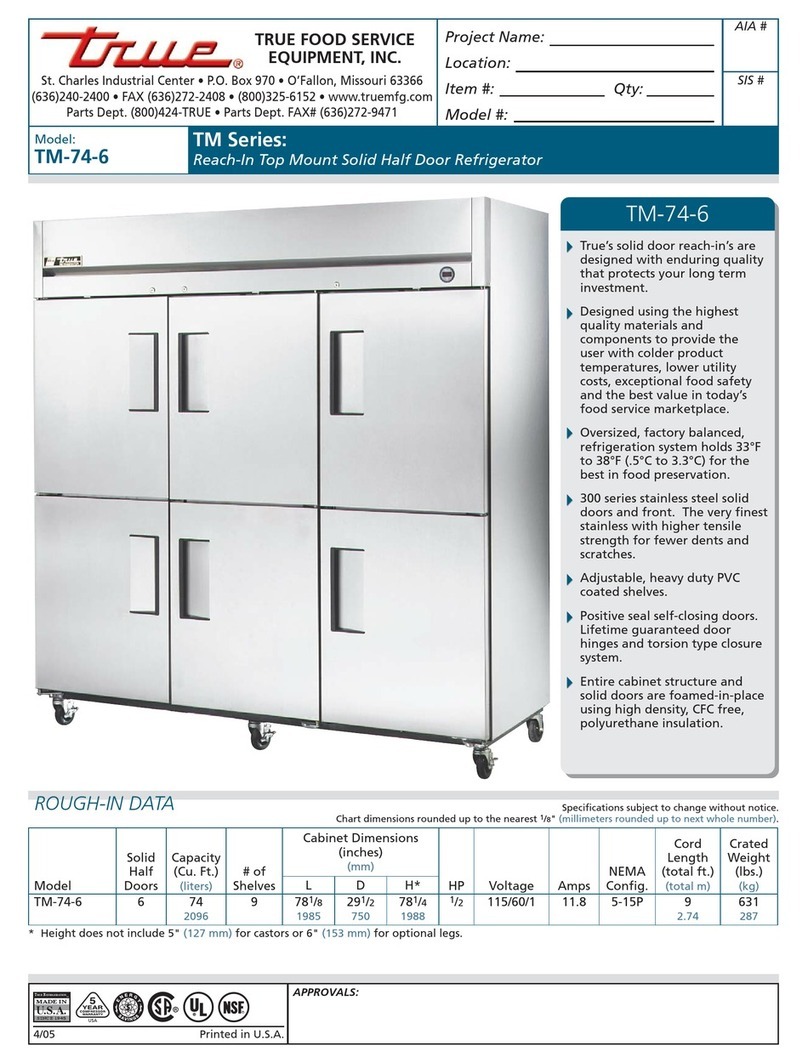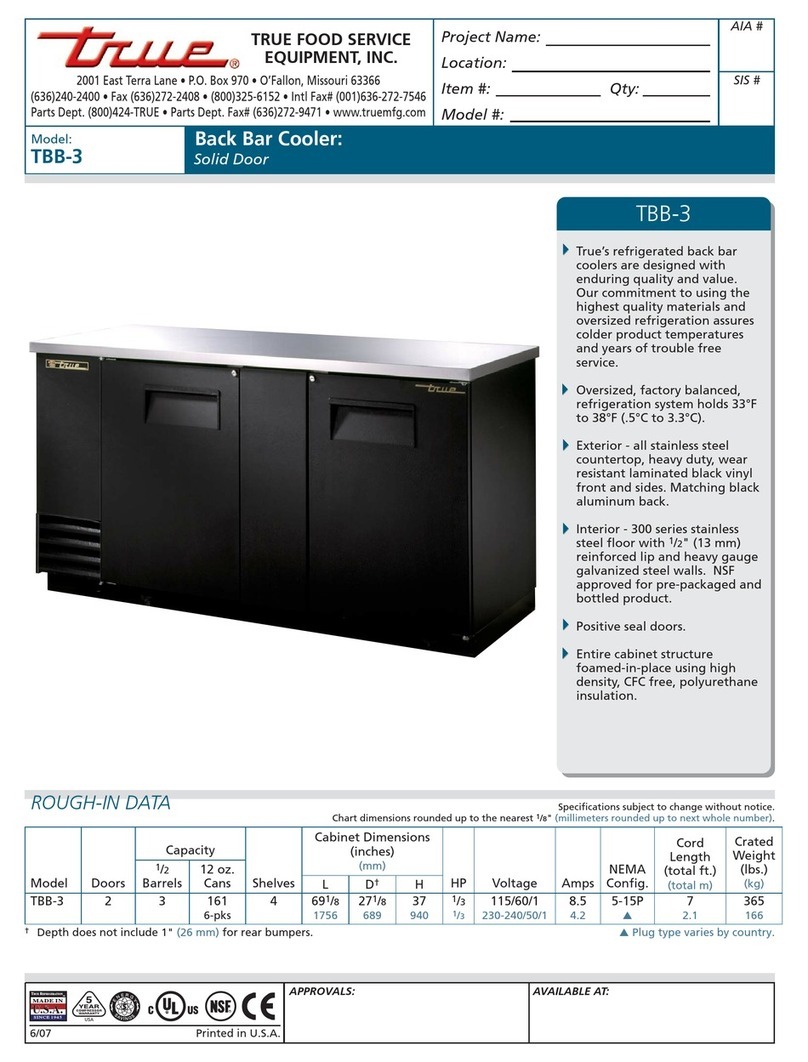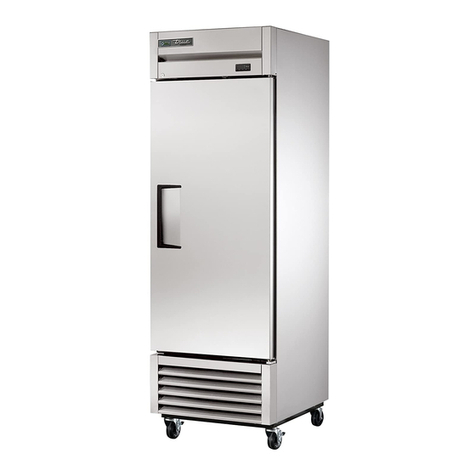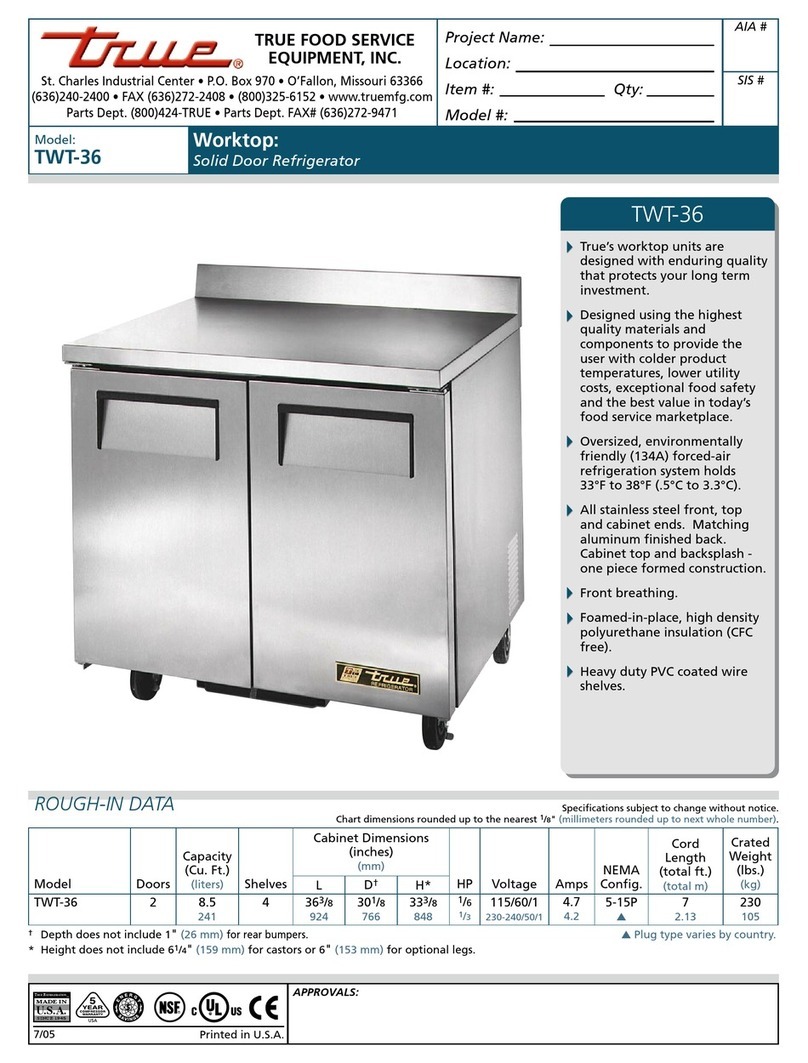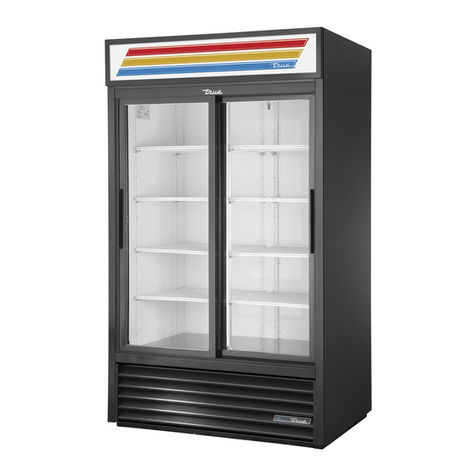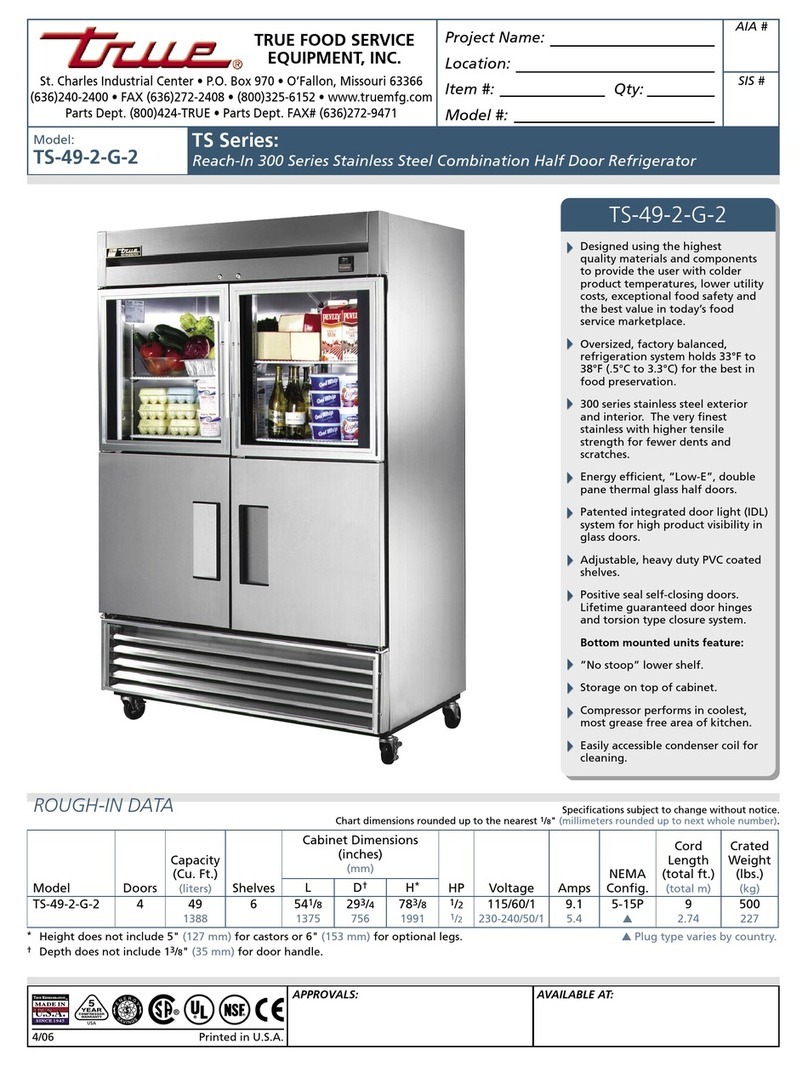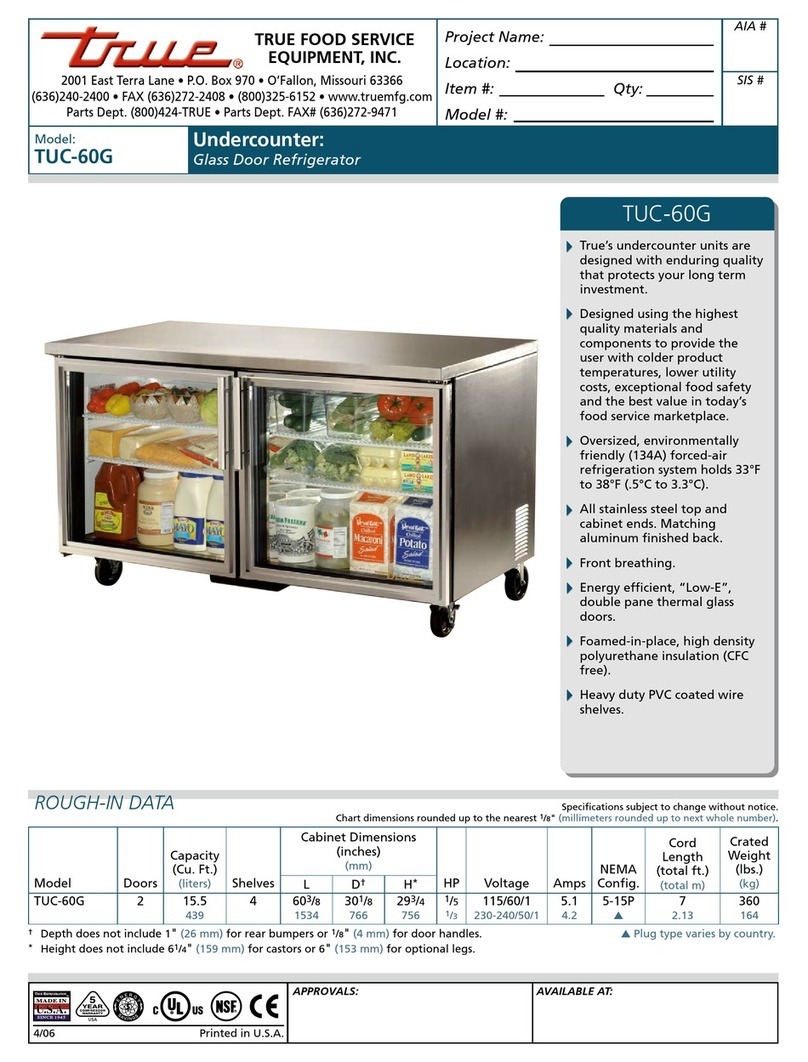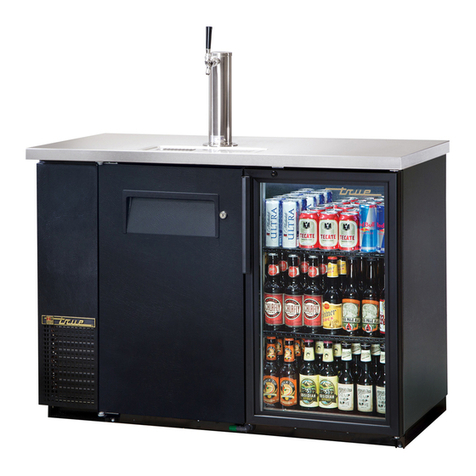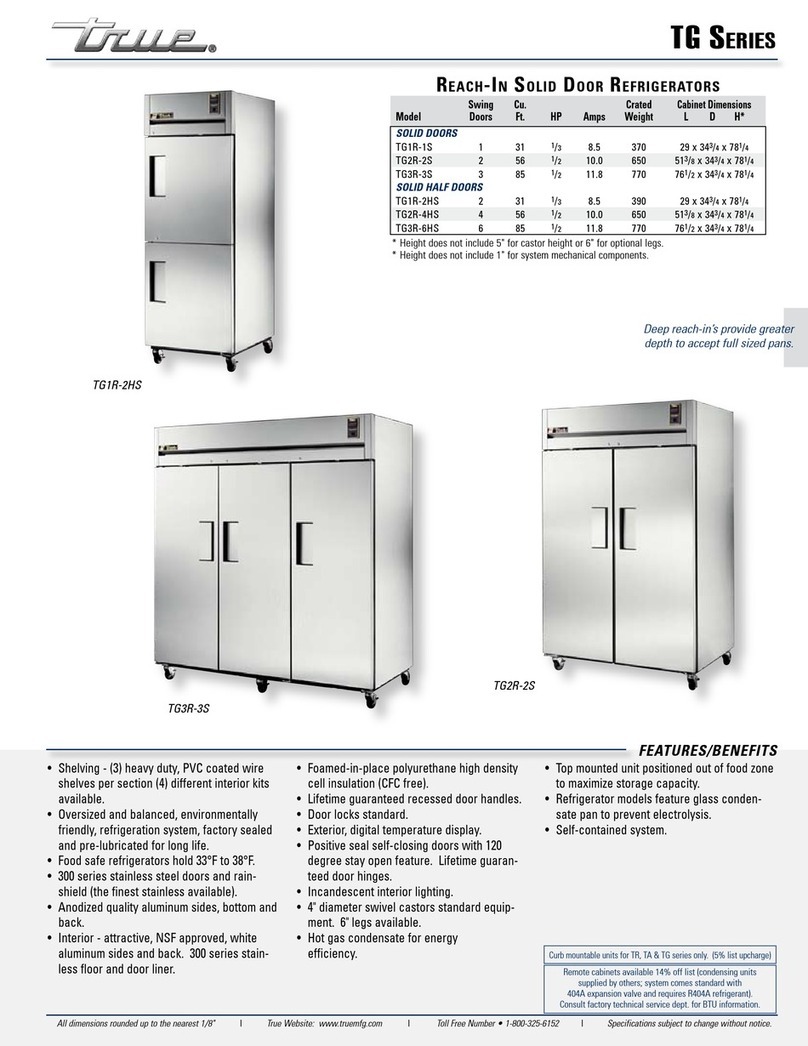............ www.truemfg.com ............
............ www.truemfg.com ............
True Food Service Equipment, Inc.
True Food Service Equipment, Inc.
INSTALLATION / OPERATION INSTRUCTIONS
INSTALLATION / OPERATION INSTRUCTIONS
4
44
4
To insure that your unit works properly from the
first day, it must be installed properly.We highly
recommend a trained refrigeration mechanic and
electrician install your Trueequipment.The cost of a
professional installation is money well spent.
Before you start to install your Trueunit, carefully
inspect it for freight damage. If damage is
discovered, immediately file a claim with the
delivery freight carrier.
True is not responsible for damage incurred
during shipment.
OWNERSHIP
Adjustable Wrench
Phillips Head Screwdriver
Level
REQUIRED TOOLS
Step 1
The following procedure is recommended for
uncrating the unit:
A. Remove the outer packaging, (cardboard
andbubbles or styrofoam corners and clear
plastic). Inspect for concealed damage.Again,
immediately file a claim with the freight carrier
if there is damage.
B. Move your unit as close to the final location as
possible before removing the wooden skid.
C. Remove door bracket on swinging glass door
models (see image 1-2).
Note: Keys for coolers with door locks are located
in warranty packets.
UNCRATING
INSTALLATION / OPERATION INSTRUCTIONS
1
2
REMOTE UNITS (This section applies to
remotes only!)
• Remote cabinets must be ordered as remote.
We do not recommend converting for a standard
self contained to remote system.
• All remote cabinets must be hard wired.
• No castors available.
• All remote cabinets come standard using 404A
refrigerant.
• All remote units come standard with expansion
valve, liquid line solenoid, heated condensate
pan, and defrost timer when applicable.
• Contact True Technical Service for BTU
requirements.
• No wiring necessary between cabinet and
condensing unit.
• All remote condensing units purchased from
True are 208/230 volts single phase.
If you have any questions regarding this
section, please call True at 1-(800)-325-6152.
